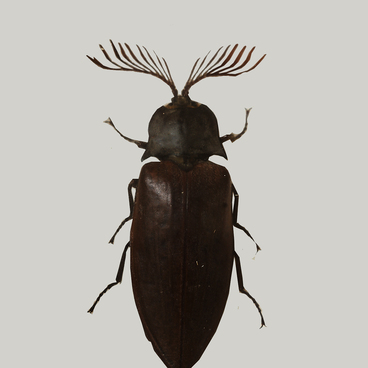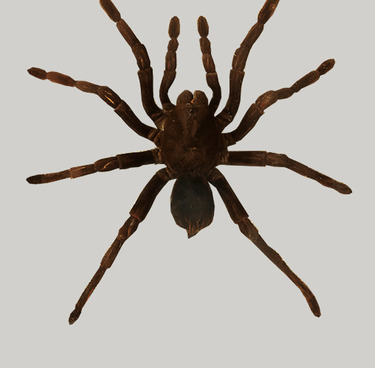All breeds of modern domestic horses, their fossil ancestors and present-day wild relatives belong to genus Equus, the group of odd-toed ungulate or perissodactyls. In the process of evolution, they had part of the fingers atrophied and were left with an odd number. Horses have only one finger — the third one, protected with a strong horny growth — the hoof.
The evolution of horses began 55 million years ago, and representatives of the modern genus Equus appeared 4 million years ago. The early specimens were of the size of a pony, and their bodies were covered with zebra-like strips. According to scientists, horses were domesticated within the interval of 3700-3000 years ago by tribes of the archaeological Botai culture, that lived in the steppes south of the Urals. Supporters of another point of view believe that those animals were domesticated earlier — 7-6 thousand years ago, by representatives of tribes that lived in the steppes of the south Cis-Ural region.
The exhibited fossil fragments of skeleton of a horse were found in the Kemerovo region in 1977 in the Pioneer mine while drilling a prospecting shaft, at the depth of 10 meters in blue clay. Flattening of the hoof phalanx probably occurred because the animal lived in places with infirm ground. The body-build is related to climatic conditions: cooling and hydration of the climate lead to development of limbs. The wide hoof may be evidence of spreading of wet soils in the habitat. It is assumed that the growth of this form replaced the atrophied lateral fingers.
The natural landscape of the present-day Kemerovo region in the Ice Age was a tundra steppe, inhabited by representatives of the mammoth fauna, to which the fossil horse belonged. Three of its subspecies lived there. Nowadays such natural conditions are found only in the high-altitude places of the region.
When warming began, the continental glacier retreated and the tundra steppe was gradually replaced with taiga forests. The long cold and dry winter seasons gave way to warmer winters with more precipitation. Grasslands were shrinking, the size of herds was falling. In Europe wild horses became rare almost 4,000 years ago. At the beginning of the last century, only two subspecies of the wild horse remained in nature — tarpan in Russia and Przewalski’s horse in Mongolia. According to one version, the latter originates from the Chinese horse that lived two and a half million years ago.
The evolution of horses began 55 million years ago, and representatives of the modern genus Equus appeared 4 million years ago. The early specimens were of the size of a pony, and their bodies were covered with zebra-like strips. According to scientists, horses were domesticated within the interval of 3700-3000 years ago by tribes of the archaeological Botai culture, that lived in the steppes south of the Urals. Supporters of another point of view believe that those animals were domesticated earlier — 7-6 thousand years ago, by representatives of tribes that lived in the steppes of the south Cis-Ural region.
The exhibited fossil fragments of skeleton of a horse were found in the Kemerovo region in 1977 in the Pioneer mine while drilling a prospecting shaft, at the depth of 10 meters in blue clay. Flattening of the hoof phalanx probably occurred because the animal lived in places with infirm ground. The body-build is related to climatic conditions: cooling and hydration of the climate lead to development of limbs. The wide hoof may be evidence of spreading of wet soils in the habitat. It is assumed that the growth of this form replaced the atrophied lateral fingers.
The natural landscape of the present-day Kemerovo region in the Ice Age was a tundra steppe, inhabited by representatives of the mammoth fauna, to which the fossil horse belonged. Three of its subspecies lived there. Nowadays such natural conditions are found only in the high-altitude places of the region.
When warming began, the continental glacier retreated and the tundra steppe was gradually replaced with taiga forests. The long cold and dry winter seasons gave way to warmer winters with more precipitation. Grasslands were shrinking, the size of herds was falling. In Europe wild horses became rare almost 4,000 years ago. At the beginning of the last century, only two subspecies of the wild horse remained in nature — tarpan in Russia and Przewalski’s horse in Mongolia. According to one version, the latter originates from the Chinese horse that lived two and a half million years ago.



